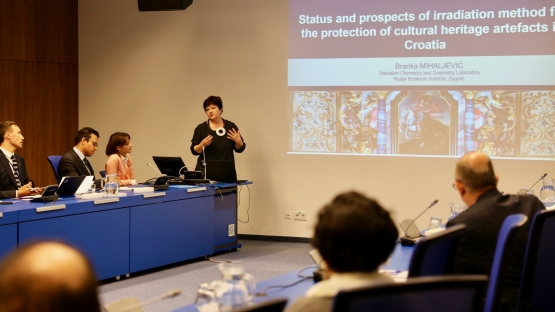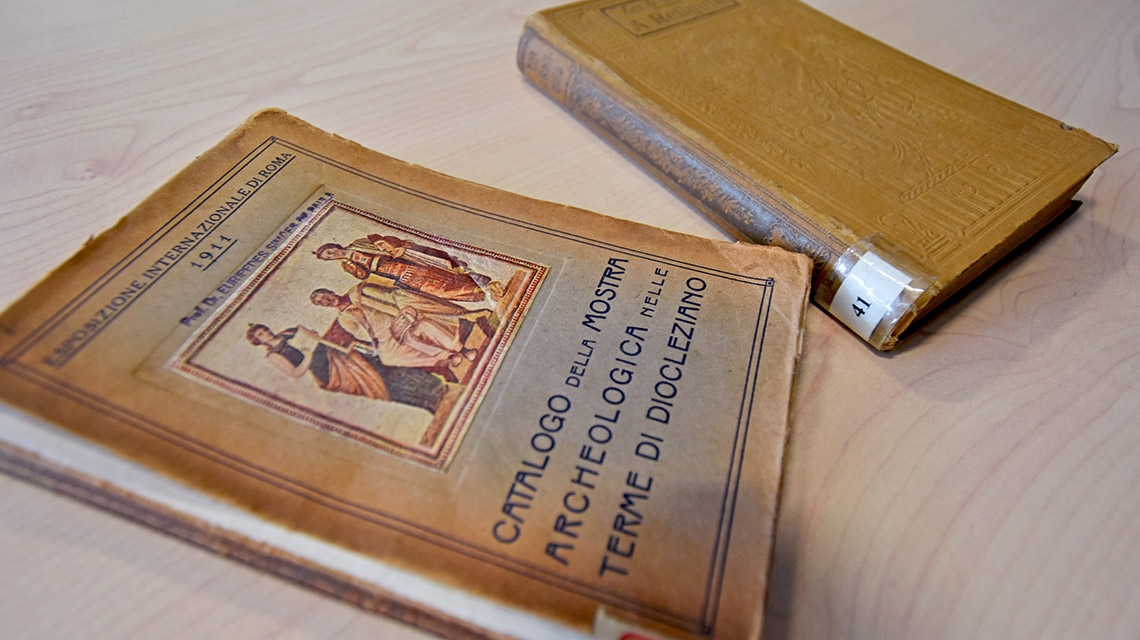On 19 September, on the penultimate day of the IAEA’s 63rd General Conference, delegates from Brazil, Croatia, France and Indonesia joined Agency staff in recounting recent achievements in the use of radiation technology to preserve and protect artefacts of cultural value, including statues, paintings and centuries-old manuscripts.
“Preserving cultural heritage using nuclear technology helps us to understand and respect the history, knowledge and experience of the countries as well as contributes to the socioeconomic benefits of the countries,” said Ana Raffo-Caiado, Director of the Division for Europe at the IAEA's Department of Technical Cooperation.
Museums, art galleries and libraries have increasingly turned to radiation to treat deteriorated cultural assets, particularly those which require emergency intervention or where the use of conventional techniques could cause damage. Reflecting this growing interaction, the ‘Nuclear Techniques for Preserving Cultural Heritage’ side event provided an opportunity to explore the outcomes and achievements of several technical cooperation projects which supported the preservation of objects of cultural value using radiation.
IAEA and Member State speakers demonstrated how artefacts were protected and preserved with the help of radiation technologies, including a collection of ancient, bronze statues in Croatia wooden iconostases in the Holy Voivode of Michael and Gabriel Church in Romania and the mummy of Egyptian pharaoh Ramesses II.
“The long-term preservation of these artefacts can pose a serious challenge to us, as these objects are often affected by their storage conditions, flooding events and even by climate change. As a result, sharing experiences through IAEA regional technical cooperation projects has been quite useful for us,” said Branka Mihaljevic, Head of the Radiation Chemistry and Dosimetry Laboratory in Croatia’s Ruder Boskovic Institute.
“Through TC projects and coordinated research projects, the IAEA has been supporting national experts by providing them with harmonized and efficient methods with which to conserve cultural heritage items for the foreseeable future. These efforts also respond to Target 4 of Sustainable Development Goal 11: To strengthen efforts to protect and safeguard the world’s cultural and natural heritage,” said Tomo Furusawa, an IAEA Programme Management Officer.
Traditionally, chemical and physical methods have been used for the treatment and restoration of artefacts, but these have drawbacks and limitations—chemical methods can leave undesirable substances in or on the objects, possibly causing harm later to the artefact, the restorers or to the environment, while physical methods can harm the object itself.
By contrast, radiation treatment does not leave any trace on the treated object or cause any damage. But this is not the only advantage which sets radiation technologies apart from convention methods—its versatility allows radiation treatment to meet the broad needs of its users. “Nuclear techniques can support our conservation efforts in many ways,” said Pablo Vasquez of Brazil’s Nuclear and Energy Research Institute (IPEN). “Authentication and dating are possible, but at IPEN our focus is disinfection and consolidation.”
The IAEA also supports research in the area of cultural heritage preservation, bringing together institutes from across the world in order to expand the possible applications of nuclear technologies. An ongoing Coordinated Research Project (CRP) is working towards the development of standardized procedures and the synthesis of new radiation-curable resins—upon its completion, the CRP’s results are expected to clarify the effects of irradiation on materials commonly found in objects of cultural value.
Training is also available online. The IAEA’s Cyber Learning Platform for Network Education and Training (CLP4NET) is a cost-free, e-learning platform which connects users with educational resources. IAEA Radiation Chemist Bum Soo Han demonstrated to attendees how the CLP4NET has been expanded to include new resources and courses related to cultural heritage, to facilitate the use of radiation technologies and to encourage further self-study.






